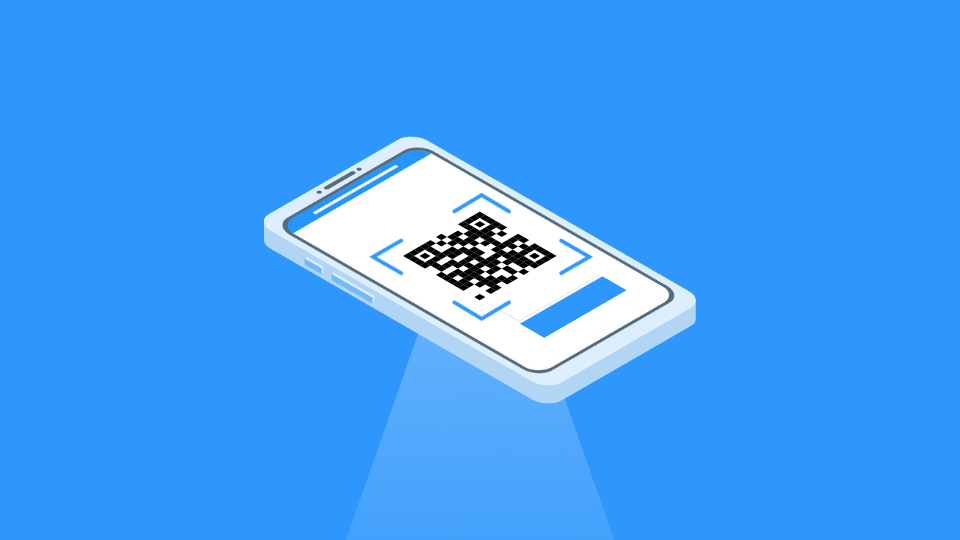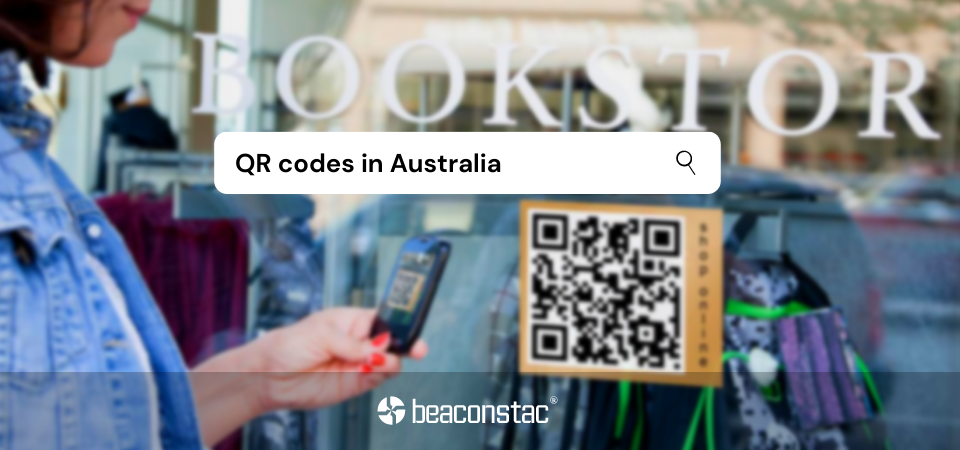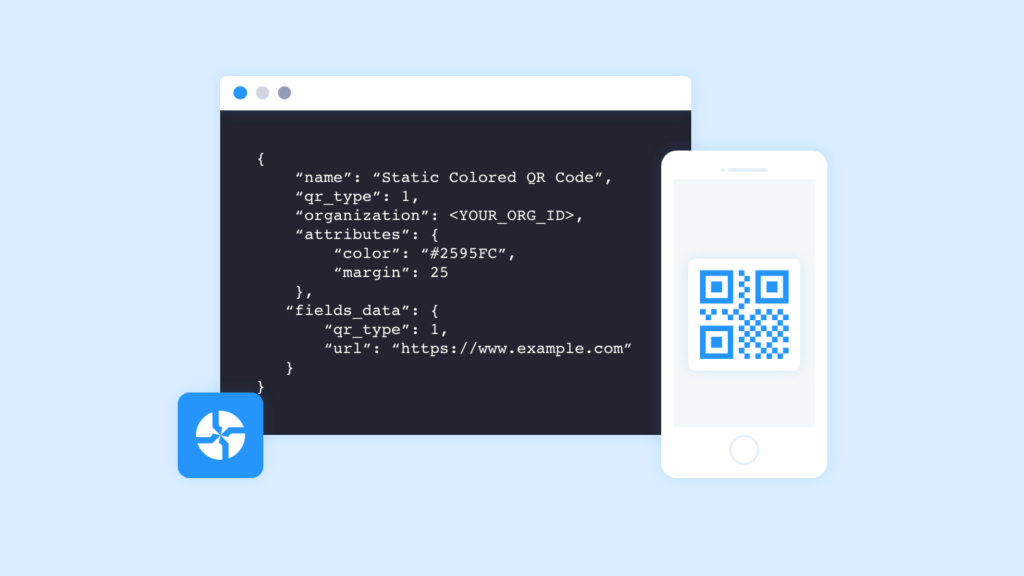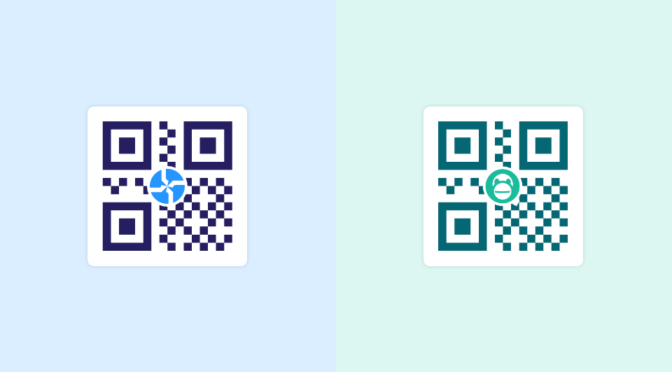Asset management systems ensure that you stay on top of all tracking-related processes for your physical assets and inventory.
With a robust and clearly-outlined asset tracking framework in place, you can save on time, trim costs, improve efficiency, do quick asset audits, and have all your asset data within your fingertips.
On the flip side, having a poorly managed asset tracking system has several pitfalls: low asset visibility, higher administrative costs, security vulnerabilities, increased asset downtime, and the like.
Okay—now that we know that asset management systems are crucial—which technology should be used for the same? Age-old barcode asset tracking in the form of SKUs and UPCs? Or something novel like QR Code asset tags?
As a comprehensive, end-to-end QR Code platform that powers QR Code asset management systems and QR Code equipment tracking solutions for a number of our customers, we strongly believe the latter should be your go-to choice.
QR Codes for asset management can help a business save money, keep track of ghost and zombie assets seamlessly, and significantly reduce decision-making time.
In this blog post, we’ll dive into why QR Codes for asset management allows you to reap cost-saving and efficiency benefits, how to create QR Code asset tags, and develop your own QR Code equipment tracking system.
Table of Contents
- Asset tags with QR Codes? Why switching to QR Codes for asset management can be good for your business
- 5 benefits you can reap with a QR Code asset tracking system
- What kind of asset information will you track?
- Where to direct your QR Codes for asset management?
- Two types of asset tracking QR Codes: dynamic and static
- Have clear printing guidelines before you deploy QR Code tags
- How to set up QR Code asset tags: A complete step-by-step breakdown
- Choose the right QR Code solution for your asset tracking needs
- Asset tracking becomes easy with Uniqode’s turnkey QR Code solution
- Uniqode’s API allows users to integrate all QR Code related processes into their own tools and systems
- Frequently asked questions
Asset tags with QR Codes? Why switching to QR Codes for asset management can be good for your business
As we’ve said before—there are plenty of ways you can track inventory or assets with RFID tags or plain barcodes like SKUs and UPCs. So why make the switch to a QR Code asset tracking system?
Here are our reasons:
Ease of use
All smartphones today come with a native QR Code reader built into the camera app. Meaning that you won’t have to be bothered about setting up separate scanning equipment and integrating them with the asset management system you use.
With QR Codes, personnel can simply use their smartphones and scan the asset to either view asset info or log data into the central asset tracking database. Again, all it takes is a single scan—without any dedicated scanning equipment or setup required.
Cut on costs and streamline asset tracking processes
By using QR Code asset tags, you’re avoiding needless expenditure on setting up any physical infrastructure required for asset tracking with RFID tags or barcodes. A smartphone’s built-in QR Code reader acts as the interface between your product and the information stored on your asset management system. This allows you to cut on costs and also streamlines the asset management process to a great extent.
5 benefits you can reap with a QR Code asset tracking system
#1 Accelerate asset management and identification

Although barcodes have been and continue to be extensively used for asset management, they cannot store a high amount of data. They also require dedicated barcode scanner devices and can prove to be difficult to troubleshoot.
QR Codes, in contrast, do not require additional scanners or separate software. Being 2D versions of barcodes, they can hold more data, and the QR-linked data or content can quickly be tapped with a simple scan. With scanning functionalities improving each year, it’s becoming easier and quicker to access the data encoded into a QR Code.
Also, should you wish to do so, you can set up automated processes for each scan an asset receives. just like school asset management software would be used in the education sector. A scan can trigger a sequence of events—say logging all asset data into the central asset management system or populating your tracking spreadsheets with relevant information.
Therefore, QR Codes for asset management allow businesses to instantly view and edit data about any asset. For instance, if you use Google’s collaborative tools, you can even create a QR Code for Google Sheets. This ensures easier sharing without having to manually open up spreadsheets and update/edit asset tracking information.
Laura Fuentes for Infinity Dish says that QR Codes have helped the company streamline the process of receiving equipment and distributing it to their customers. Also, QR Codes help store data in one place and is instantly accessible, which is extremely helpful in daily operations.
#2 Widespread accountability for assets

Another important reason for switching to QR Codes for asset management is that they provide asset protection and accountability and make it easy to create a fixed asset register automatically.
A fixed asset register is nothing but a detailed roster of all the physical assets owned and used by a business such as manufacturing equipment or even office hardware like laptops, printers, chairs, and desks.
QR Codes for asset management can help businesses monitor their fixed assets closely by tracking their location and who they are handled by. In addition, they also help with the transparency of the condition and status of these assets.
#3 QR Codes are error-correctable

QR Codes have an error-correction feature built into them—meaning that they can be damaged or dirty upto a certain extent and still be readable. Using asset tags with QR Codes for all your physical assets that are prone to wear and tear can thus be ideal.
They are different error-correction levels: L, M, Q, H, and each of them correspond to a different data-retention capability. Level L translates to 5% error correction capability while Level H provides the highest level of error correction at 30%.
#4 Increase asset uptime

Remember that a QR Code essentially functions as a portal between your physical asset and the information, data, or digital content pertaining to it. This information can be directly stored on the asset management software that you use. And with a quick scan on a smartphone, asset management personnel can immediately pull out information about the asset in question and thereby reduce downtime.
Increasing asset uptime can have a direct impact on your revenue generating activities. Having complete visibility into which assets are non-functional and require maintenance reduces inefficiencies and maximizes effective utilization of business resources.
Jamie Hickey, the founder of Coffee Semantics and an owner of a furniture company, says that before using QR Codes for asset tracking, he had issues with assets being shipped to wrong locations and even being lost.
“QR Codes have helped our company cut down on losses by 78% annually and also helped with streamlining our asset management system.”
#5 QR Code asset management systems are flexible and easy to set up

You don’t need a separate QR Code-based asset management software to leverage asset tracking via QR Codes.
QR Code asset tracking can be set up easily and integrated with all the software tools that you already use for your business through API. All you need is a QR Code generator that allows you to create codes for all your asset tracking needs. After these are created, you can use third-party integration platforms like Zapier or Integromat to link the codes with your software or even use an API.
Also, if you didn’t know before, some QR Codes are dynamic in nature, which means that the content encoded into them can directly be changed on the backend without any reprinting. So if you print out your QR Code stickers for your assets but need to update some information, you can easily do so with dynamic QR Codes.
Static QR Codes for asset tracking are a good option to consider as well, but remember that you won’t be getting the added flexibility to change the encoded information on the backend.
A turnkey QR Code solution for asset management.
Create QR Code asset tags in no time with Uniqode’s bulk generation features, integrations, API, and automation possibilities.

What kind of asset information will you track?
While setting up your asset tracking framework, it’s vital to figure out what kind of information you would need to track for your assets such that you can reduce asset downtime, bring down administration costs, and increase efficiency.
This will vary depending upon the industry and the kind of assets being tracked. For example, retailers will use a standard stock-keeping unit (SKU) system to track and manage inventory. Consider the type and size of the assets that you need to set up a management system for and include all information that is necessary like asset status, unique serial numbers, time-stamps, and so on.
Two types of asset tracking with QR Codes: static and dynamic
There are two basic types of QR Codes: static and dynamic. As the terminology would suggest, static QR Codes do not allow you to change the content encoded into them after they are generated.
On the flip side, dynamic QR Codes allow you to update or edit any information behind the QR Code at any point in time, even after being generated and printed as QR Code stickers for storage purposes.
If you decide to take the static QR Code route, it is still beneficial to invest in a paid QR Code solution that will allow you to deploy static codes in bulk in one go for all your assets. You also have the option to automate tracking processes and integrate QR Code creation with the software tools or the CRM platform that you already use.
Dynamic QR Codes offer more functionalities apart from the flexibility to update asset management information at any time—and therefore lie more on the expensive side of things.
Have clear printing guidelines before deploying your QR Code tags
If you decide to use QR Code asset tags for your asset management systems, develop a clear printing process framework before you begin to deploy your codes.
We suggest that you go with a minimum baseline of 1cmX1cm or 38X38px for your QR Code size.
Also, ensure that you use high-quality paper for your QR Code stickers such that they can withstand damage and dirt.
For more information about how to size your QR Codes right check out this guide: How to Perfectly Size Your QR Codes.
You can also read our guide on QR Code printing guidelines.
Where to direct your QR Codes for asset management?
Before you create your QR Code asset tag, it’s crucial to determine the destination it will lead users to. In the context of asset management and tracking, here are several options for your QR Code’s final destination:
1. QR Codes that direct to a form
One common use of QR Codes in asset management is to direct users to a form. This form could be hosted on your website or a dedicated form-building platform. When scanned, users can update asset-related information in the form. This is particularly useful for tracking maintenance records, location changes, or any other data relevant to the asset’s lifecycle.
If you’re using Uniqode: With Uniqode, you can effortlessly create and link a form to your QR Code within the same dashboard, eliminating the need for a separate platform.
2. QR Codes that direct to a web page
Another versatile option is directing QR Codes to a web page. This page can act as a hub that provides additional information and resources related to the asset. It might include user manuals, troubleshooting guides, or historical data. It can also include a checklist or a form to update asset information.
If you’re using Uniqode: You can create a Linkpage, a simple one-page website that links to all your important PDFs, images, forms, and other multimedia—without buying hosting or a domain.
3. QR Codes integrated with Google Sheets
Integrating QR Codes with Google Sheets provides a cost-effective asset management solution. Each scan populates a new row in the spreadsheet with relevant data, including QR Code ID, timestamp, location, and more. This real-time integration facilitates easy collaboration among team members.
If you’re using Uniqode: Our platform’s integration with automation tools such as Zapier and Make allows you to easily connect Google Sheets to your QR Code for efficient asset tracking.
4. QR Codes integrated with Asset management software
As we already discussed above, you can integrate the QR Code with your current asset management system, such as Zoho inventory, inFlow, or QuickBooks, using Uniqode’s API. Connect all QR Code-related processes to your software tool and set up a robust QR Code asset management system on a single dashboard.
If you don’t have an asset management system yet:
You can still implement QR Code-based asset tracking. Begin by considering your organization’s needs and budget. Start small with Google Sheets or a form-based approach, and as your asset management requirements grow, consider investing in specialized asset management software.
How to set up QR Code asset tags: A complete step-by-step breakdown
Scenario 1: Creating QR Code asset tags in bulk
- Go to Uniqode’s QR Code generator.
- Select Products on the navigation bar and click on QR Codes.
- Click on the Bulk Upload button in the top right corner.
- Choose the QR Code type that is suited for you asset tracking requirements.
- Using the CSV and XLS sheet templates enter the info that you would like to be attached to each code that will go on your assets.
- Customize the design of the QR Code to reflect your branding or other requirements.
- Click on Finish and label your batch.
- Your QR Code asset tags are now ready. You can download them in multiple formats like PDF, SVG, JPG, PNG.
Scenario 2: Creating one-off QR Codes to go on your assets as tags
- Go to Uniqode’s QR Code Generator.
- Select Products from the side navigation bar and choose QR Codes. Click on Create QR Code in the top right corner.
- Choose the QR Code type suited for your QR Code asset tags.
- Customize the QR Code content and design.
- Click on Finish and your QR Code asset tag is now ready. You can download it in multiple formats like PDF, SVG, JPG, PNG.
Choosing the right QR Code generator for your asset tracking needs
Before you invest in a QR Code solution for your asset management system, here are some features that are a must for any QR Code-based asset tracking:
- Bulk QR Code creation (both from within the QR Code platform and directly from GSheets using a plugin).
- Enterprise-grade QR Code security. The main security certifications to look for are SOC-2 Type 1 and Type 2 certifications as well as GDPR compliance.
- Integration and automation capabilities through third-party tools like Zapier, Workato, Webhooks, etc.
- QR Code API to integrate the QR Code solution into your own software tools like CRM solutions or asset tracking software.
- Easy collaboration and identity access management with administration and sub-accounts.
- QR Code tracking and analytics to give you a high-level overview of your asset tracking processes.
Asset tracking becomes easy with Uniqode’s turnkey scalable QR Code solution
Uniqode is an enterprise-friendly one-stop solution for all your QR Code asset tracking requirements.
You can scale up QR Code deployment with our bulk generation features—both directly from our dashboard as well as Google Sheets or Microsoft Excel if you prefer to do everything within a single spreadsheet. We’re the only QR Code platform to have a dedicated QR bulk generator plugin on Google Sheets!
You can save all your QR Code design templates to have consistency with all the QR Codes you want to deploy. In addition to the above, you also get the flexibility to administer different functionalities on the platform to different sub-accounts within the main account. This is crucial to avoid mistakes while managing an enterprise-level asset tracking system.
Frequently asked questions
1. What are QR Code labels for asset management?
QR Code labels, also known as QR Code tags, for asset management are physical labels containing QR Codes, enabling quick access to asset information when scanned. They streamline asset tracking by providing details such as location and maintenance history. These labels enhance accuracy and reduce manual data entry errors, making asset management more efficient.
2. How to create QR Code for asset management?
There are two ways in which you can create QR Codes for asset management:
Creating QR Code for a single asset
Step 1: Log-in to your Uniqode dashboard and choose ‘QR Codes’ from the left panel.
Step 2: Choose your QR Code type, such as website (URL), PDF, location, etc.
Step 3: Paste your destination link
Step 4: Customize your QR Code and turn on advanced settings such as password protection, GPS analytics, etc.
Once you click “FINISH,” your QR Code can be printed on asset tags or labels.
Creating bulk QR Codes for multiple assets at once
Step 1: Log-in to your Uniqode dashboard and choose ‘QR Codes ’ from the left panel.
Step 2: Select bulk upload and upload a CSV or XLSX file containing QR Code data (name, destination link, ID, etc.)
Step 3: Customize your QR Code and assign a label to your batch.
Step 4: Submit a request for bulk QR Code creation
You will receive a notification via email once your QR Codes are ready. Depending on the size of your batch, the creation process can take up to four minutes.
3. How do you use QR Codes in asset management?
Using QR Codes in asset management involves affixing QR Code labels or tags to assets and then scanning them with a QR Code reader or mobile device to access asset information instantly.
-
With brands expanding their presence on omnichannel platforms to reach more audiences, learn how QR Codes help brands sync their online and offline marketing strategies to close the loop seamlessly.
-
Trying to build a loyalty program for your brand? Look no further! Check out this complete guide on the best customer loyalty platforms to help pick the best one and foster long-term brand loyalty effectively.
-
Struggling to improve in-store sales and shelf performance rate for your brick and mortar retail store? QR Codes for planograms are the answer you’re looking for.
-
Looking for a design software that fits your requirements? Check out this detailed guide on product packaging design tools with helpful information on how to create an effective packaging design.
-
What led to the surge in the usage of QR Codes in Australia? Is it because of contact tracing or payments? What does the future hold? Let’s find out.
-
Want to know how to add a QR Code API to your app without complex troubleshooting? Read to find out!

















